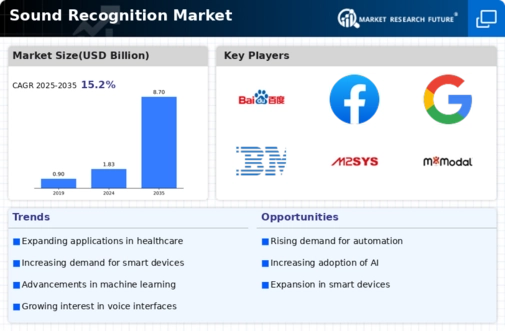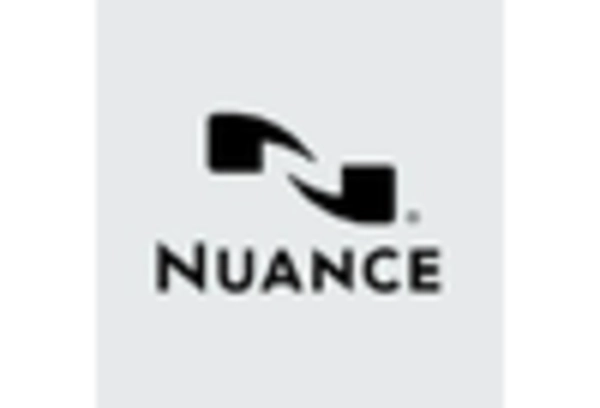Market Share
Sound Recognition Market Share Analysis
In the dynamic landscape of the Sound Recognition Market, companies deploy various strategies to secure and enhance their market share positioning. One key approach involves product differentiation, where companies focus on offering unique and advanced features in their sound recognition solutions. By introducing cutting-edge technologies, such as improved voice recognition algorithms, enhanced noise cancellation, and superior audio processing capabilities, companies aim to stand out in the competitive market and attract a discerning customer base.
Strategic partnerships and collaborations represent another crucial aspect of market share positioning in the Sound Recognition Market. Companies often form alliances with other technology providers, device manufacturers, or software developers to integrate their sound recognition solutions seamlessly into a broader ecosystem. These partnerships not only extend the reach of their technology but also create synergies that enhance the overall user experience. For instance, collaborations between sound recognition providers and smart home device manufacturers can lead to more integrated and user-friendly solutions.
Moreover, market players frequently invest in research and development to stay ahead of the technological curve. Innovations in sound recognition algorithms, machine learning models, and hardware components contribute to the development of more robust and efficient solutions. Companies that prioritize R&D activities can gain a competitive edge by offering state-of-the-art products that meet evolving customer expectations and industry standards.
Strategies centered around market expansion and geographic diversification also play a pivotal role. Companies seek to tap into new markets and regions by adapting their sound recognition solutions to cater to diverse cultural and linguistic preferences. By understanding local nuances and adapting their products accordingly, companies can broaden their customer base and establish a stronger foothold in different parts of the world.
Effective marketing and brand positioning constitute another facet of market share strategies. Building a strong brand presence helps in creating customer trust and loyalty. Companies often invest in targeted marketing campaigns to showcase the capabilities and benefits of their sound recognition solutions. Additionally, emphasizing user testimonials, industry awards, and certifications can contribute to building a positive brand image, influencing customer perceptions and preferences.
Furthermore, a responsive and customer-centric approach is integral to maintaining and expanding market share in the Sound Recognition Market. Companies that actively listen to customer feedback, address issues promptly, and continuously improve their products based on user input are more likely to foster customer satisfaction and loyalty. Positive customer experiences not only contribute to word-of-mouth recommendations but also help in retaining existing customers in an increasingly competitive market.
Market share positioning is also influenced by pricing strategies. Companies must strike a balance between offering competitive pricing and ensuring profitability. Some may adopt a penetration pricing strategy to gain initial market share, while others may position themselves as premium solutions with higher pricing, targeting a specific segment that values advanced features and premium quality.
Lastly, mergers and acquisitions can be strategic moves to consolidate market share in the Sound Recognition Market. By acquiring complementary technologies or absorbing key competitors, companies can strengthen their market position, achieve economies of scale, and expand their customer base. Mergers and acquisitions also provide opportunities for accessing new intellectual property, talent pools, and distribution channels, all of which can contribute to enhanced market share.
















Leave a Comment